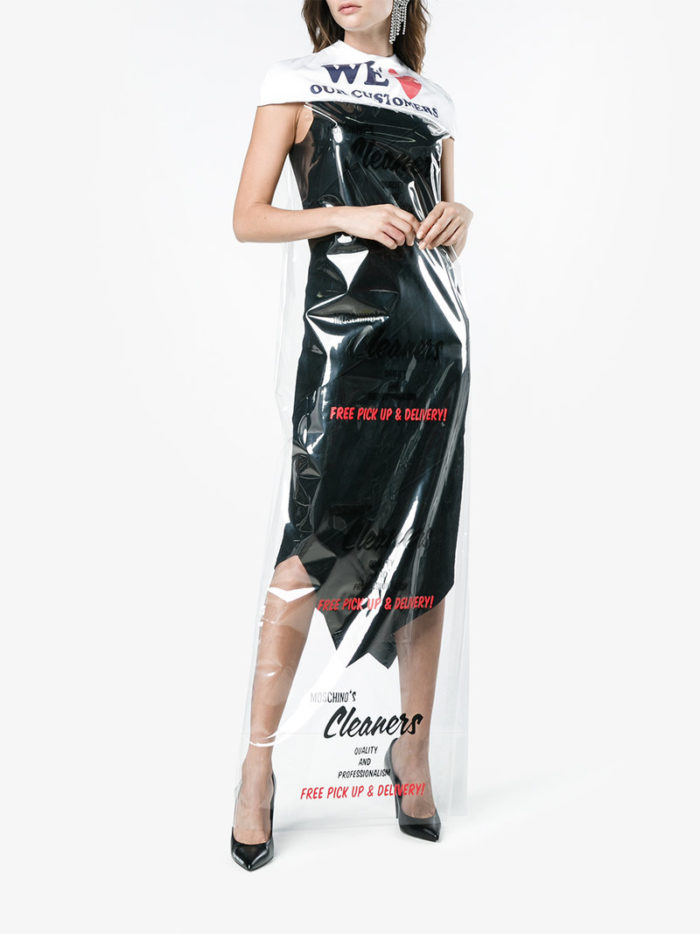A version of the article was first published in The Frontlash.
 I had an argument with my colleague last week. We were sorting the washing pile at work, and she wanted to send as little as possible to the dry cleaners. I work as a TV stylist, a role that involves all sorts of things from helping people select what to wear on TV, to shopping for them, physically helping them put their clothes on, making alterations when they’re needed, and, yes, managing the washing of those clothes. We were nearing the end of our shoot and had spent almost all of our dry cleaning budget.
I had an argument with my colleague last week. We were sorting the washing pile at work, and she wanted to send as little as possible to the dry cleaners. I work as a TV stylist, a role that involves all sorts of things from helping people select what to wear on TV, to shopping for them, physically helping them put their clothes on, making alterations when they’re needed, and, yes, managing the washing of those clothes. We were nearing the end of our shoot and had spent almost all of our dry cleaning budget.
I’ve always been particular when following washing instructions on clothing tags—if it says dry clean only, I do what it says! She told me about how toxic dry cleaning is, how bad it is for the environment, and, then, confessed that she had been washing most of our dry-clean-only clothing for months. I was a little upset, not because she had been sneaking around being a magical washing fairy behind my back, but because I like to be the most educated (and fiscally responsible) green warrior in the office and she was beating me at my own game. (Yes, I’m a little competitive.) Later that night I fell down an Internet rabbit hole and learned everything I could about dry cleaning. I came across this government website, which confirmed, “Perchloroethylene (PERC) dry cleaning solvent and the waste produced from the dry cleaning process are suspected carcinogens and are toxic to the environment.” If the Australian government is worried about the safe disposal of these chemicals, then I should do everything possible to avoid dry cleaning in the future.
That’s just the beginning. Who hasn’t cringed while picking up clothes individually wrapped in disposable poly garment bags and disposable wire hangers? It all adds up to astronomical amounts in our landfill and our oceans.
The next day, I returned to the office, swallowed my pride and asked my fellow TV stylists their tips to avoid dry cleaning. While I used a lot of these tricks for on-set emergencies, it never occurred to me to use them as a way to reduce dry cleaning, save money, and the planet.
1. Hang your clothes.
Be honest, how many times have your clean clothes ended up at the dry cleaner because you threw them on the bathroom floor? Prevention is better than a cure. Hang your lightly worn clothes as soon as you take them off.
2. Invest in a clothes steamer.
Every stylist I know uses a steamer to care for their clothes. It’s a magical machine that uses steam to eradicate wrinkles and is best used on soft, floaty fabrics like silk, rayon or chiffon… or your tee shirts! It’s safer on delicate fabrics than an iron (say goodbye to shiny iron marks) and is great for those occasions when your blouse is clean but wrinkled. Handheld steamers start at about $40 and as long as you have access to power and tap water, it’s cheap to run. Compared to a trip to the dry cleaners it is much kinder to the environment, your body, and your wallet. Check out steamers used by the pros here. For more suggestions, on steamers, click here.
3. Know your fabrics.
The reason many garments say dry clean only is because designers legally only have to provide one method of cleaning, and professional is often safest from their point of view. However, you can often forego the dry cleaner for most fabrics. Not sure what fabric your garment is? Check out the care instruction label inside and follow the below instructions.
Silk: Silk is fine to wash by hand with care. It’s the agitation process and the heat from the water that cause silk to shrink or become damaged. When washing silk at home, hand wash using cold water and a gentle washing detergent, then turn the garment inside out and lay it flat to drip dry in the shade so it doesn’t fade. Depending on what dye has been used, water can cause the dye to run, so for multicolored prints, it’s best to leave it to the professionals.
Synthetics: Synthetic fibers are man-made and were popular in the last century, so you will frequently find them in vintage clothing. These days they are often blended with other fibers to give the fabric a more wearable property (ie. the elastane in your stretch cotton jeans). Generally, synthetic fabrics like polyester, Lycra, and nylon can be machine washed. Some synthetics such as acetate and nylon should only be hand washed or put on a delicate cycle inside a delicates bag. If it’s a 100 percent man-made fiber it will likely dry quickly and gain too much static electricity or be easily damaged with the heat from the dryer, so stick to air drying.
Wool: Your favorite wool sweater can be hand washed, but too much movement will matt the fiber, create pilling or felt. Too much heat and the fibers will shrink. Unless you plan on donating that wool sweater to your hairless cat, always gently hand wash wool in cold water. Use a gentle detergent like a specifically formulated wool wash or learn to make your own. After rinsing it, gently remove excess water with a towel (don’t ring it tight) and lay the garment flat to dry so it doesn’t lose its shape. Do not put it in the dryer! If you’ve been sending your wool garments to the dry cleaner to remove the little balls of pilled fabric that sometimes occur, then you can save yourself the trip by investing in a sweater comb. Wool coats and blazers should be sent to the dry cleaner because of the way they are made (water may cause the inner structures to become damaged). You can follow some of my tips below to minimize the amount of time they spend with your dry cleaner.
Cotton and Linen: Are natural fibers and are usually fine to machine wash in cold water. If they are washed in hot water or haven’t been preshrunk before they were constructed then garments will likely shrink a little the first time they are washed. Wash them in cold water and avoid a hot dryer to minimize this. If it is a linen or cotton blazer or structured coat, it will likely require dry cleaning because of the way the garment is constructed. However, most pants, shirts, and dresses are fine.
Blended Fabrics: Many modern fabrics are a blend of two different fibers. If you come across this on a care label, always follow the washing instructions for the most delicate of the fiber combination. For example, with a silk/linen blend, follow the instructions for silk which is more easily damaged then linen.
4. Bring out the booze.
Vodka is your friend (yes, vodka): put it in a misting spray bottle and lightly spray it on the inside of your favorite sequin or embellished dress or wool coat. As the alcohol evaporates it will kill any germs or smells in the lining without a trip to the dry cleaners… and you can drink the leftovers. Just don’t use flavored vodka that will leave a strong smell.
See more tips here.
Do you have a secret no-dry-cleaning trick up your sleeve?
Related: How Smart Homes Are Speeding Up Climate Change–& Wrecking Your Health
Invest Now In These Luxury Vegan Shoes–Because You’re A Grown Woman
Get more like this—Subscribe to our daily inspirational newsletter for exclusive content!
__
Photo: Moschino




